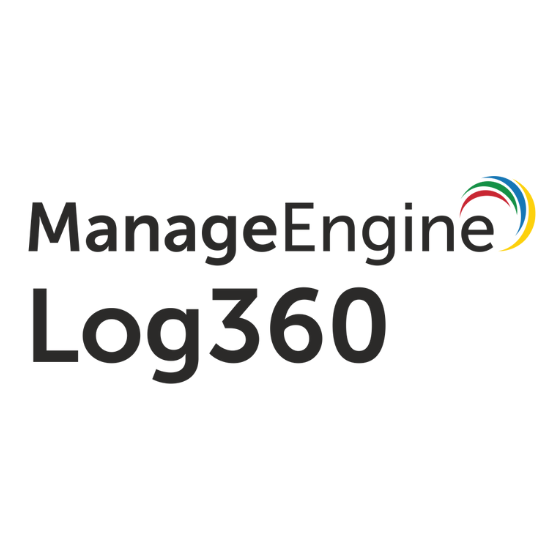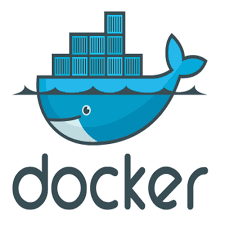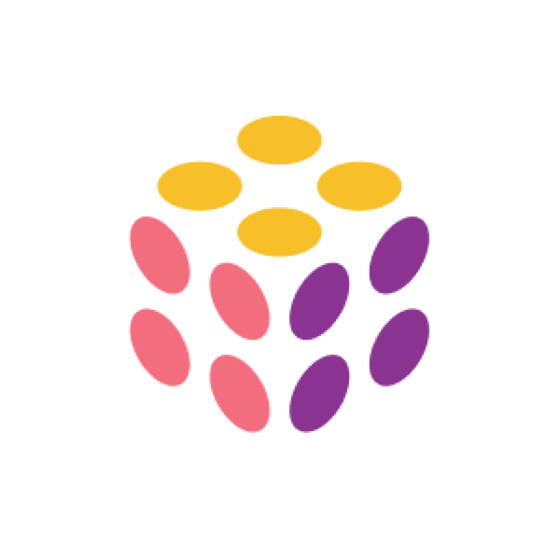Best SOAR Platforms Shortlist
Here's my pick of the 10 best software from the 23 tools reviewed.
Our one-on-one guidance will help you find the perfect fit.
Navigating the tumultuous waters of cybersecurity, I've seen firsthand the damage malware can inflict and the challenges that SecOps teams face daily. SOAR platforms are designed to streamline and fortify your response to such threats. With these tools, not only can organizations bolster their defenses against cyber threats, but they also alleviate the overwhelming manual tasks that often bog down security teams.
By consolidating your security processes into a single response platform, you can address and remediate issues faster, ensuring your operations remain unhampered. I genuinely believe that the right SOAR platform can be a game-changer for your cybersecurity posture. Dive in, and discover the options that might just be the solution you've been seeking.
What Is a SOAR Platform?
A SOAR (security orchestration, automation, and response)platform is a comprehensive solution designed to help organizations streamline their security operations. Typically used by IT security teams and professionals, its main objectives are to integrate various security tools, automate repetitive tasks, and provide a centralized interface for managing and responding to security incidents.
The platform aids in efficiently detecting, investigating, and mitigating potential security threats, allowing organizations to bolster their defenses and reduce response times.
Best SOAR Platforms Summary
| Tool | Best For | Trial Info | Price | ||
|---|---|---|---|---|---|
| 1 | Best for real-time threat detection | Free demo available | Pricing upon request | Website | |
| 2 | Best for phishing threat triage | Not available | Pricing upon request | Website | |
| 3 | Best for rapid threat intelligence integration | Not available | Pricing upon request | Website | |
| 4 | Best for integration with Google Cloud assets | Not available | Pricing upon request | Website | |
| 5 | Best for scalability in large enterprises | Not available | Pricing upon request | Website | |
| 6 | Best for threat intelligence playbooks | Not available | Pricing upon request | Website | |
| 7 | Best for cloud-native security orchestration | Not available | Pricing upon request | Website | |
| 8 | Best for integration with Splunk's SIEM | Not available | Pricing upon request | Website | |
| 9 | Best for multi-layered security operations | Not available | Pricing upon request | Website | |
| 10 | Best for complex enterprise environments | Not available | Pricing upon request | Website |
-

Docker
Visit WebsiteThis is an aggregated rating for this tool including ratings from Crozdesk users and ratings from other sites.4.6 -

Pulumi
Visit WebsiteThis is an aggregated rating for this tool including ratings from Crozdesk users and ratings from other sites.4.8 -

GitHub Actions
Visit Website
Best SOAR Platforms Reviews
ManageEngine Log360 is a security information and event management (SIEM) solution designed to help organizations detect, prioritize, investigate, and respond to security threats. It combines various security capabilities, including data loss prevention (DLP) and cloud access security broker (CASB) functionalities, to provide comprehensive protection across on-premises, cloud, and hybrid environments.
Why I Picked ManageEngine Log360:
I like its integrated incident management system, which allows you to configure real-time alerts for potential threats. This feature ensures that your team is promptly notified of security incidents, enabling swift response and mitigation. Additionally, its user and entity behavior analytics (UEBA) leverages behavioral changes to spot anomalous activities within your network. By understanding typical user and entity behaviors, the platform can flag deviations that may indicate security threats, enabling proactive measures.
Standout Features & Integrations:
Features include data visualization through intuitive dashboards and built-in reports, which help your team interpret complex data more easily. The platform also offers behavior analytics to identify anomalies, assign risk scores to users and entities, and corroborate threats using machine learning techniques. Furthermore, the integration of threat intelligence provides alerts about blacklisted IP addresses and URLs recognized from STIX/TAXII-based feeds, helping you stay ahead of potential attacks by informing you of known malicious entities.
Integrations include Constella Intelligence, Webroot BrightCloud Threat Intelligence, STIX/TAXII protocols, AlienVault OTX, ThreatFox, Palo Alto devices, Barracuda CloudGen devices, Sophos XG devices, Cisco devices, Fortinet devices, Endpoint Central, and ADManager Plus.
Pros and cons
Pros:
- Customizable reporting
- Real-time alerts
- Provides essential log-in information for multiple platforms
Cons:
- May require additional licenses for different components
- Configuration can be complex
KnowBe4 PhishER is a cybersecurity platform tailored to handle the ever-increasing menace of phishing threats. It aids organizations in quickly assessing and responding to potential phishing emails, solidifying their stance as the foremost choice for phishing threat triage.
Why I Picked KnowBe4 PhishER:
In my exploration of cybersecurity tools, I found myself drawn to KnowBe4 PhishER based on its dedicated focus on phishing. When determining which tool to choose for this list, its specialized capabilities were hard to overlook. I firmly believe its prowess in phishing threat triage sets it apart from the array of SOAR solutions available.
Standout Features & Integrations:
Among its most invaluable features, KnowBe4 PhishER offers customizable dashboards, enabling security analysts to prioritize and manage phishing alerts in real-time. Its machine learning component assists in rapidly categorizing potential threats, minimizing alert fatigue for SOC teams.
Integration-wise, KnowBe4 PhishER connects with prominent platforms like ServiceNow for incident response processes and has plugins that link it with a broader security data ecosystem.
Pros and cons
Pros:
- Robust integrations with leading security information and event management platforms
- Machine learning capabilities aid in swiftly classifying potential phishing threats
- Specialized in phishing threats, catering to a significant cybersecurity concern
Cons:
- Organizations requiring diverse integrations might need to invest in additional plugins or tools.
- Firms not primarily concerned with phishing might find it too specialized
- May not offer a broad SOAR solution for non-phishing cyber threats
InsightConnect, developed by Rapid7, serves as a pivotal SOAR solution tailored to automate security processes efficiently. Given its prowess in hastening threat intelligence integration, it aptly aids businesses to respond faster and more decisively to cyberattacks, which underscores its niche in rapid threat intelligence.
Why I Picked InsightConnect:
In the complex landscape of cybersecurity, determining the right tool often requires an intricate blend of judgment and comparison. I chose InsightConnect, not just for its impressive features but for its distinctive capability to integrate threat intelligence into security operations quickly. This swift integration is the cornerstone reason for deeming it best for rapid threat intelligence integration.
Standout Features & Integrations:
InsightConnect's dashboard stands as a sentinel, offering real-time visibility into potential threats and security data, making it easier for SOC teams to prioritize and manage security alerts. With its drag-and-drop feature, creating automated workflows becomes more accessible, diminishing manual tasks and simplifying decision-making processes.
Among its integrations, InsightConnect links with ServiceNow, Palo Alto Networks, and its parent company's suite, Rapid7, ensuring that security analysts have the tools they need at their fingertips.
Pros and cons
Pros:
- Strong integration capabilities, especially with Rapid7 products
- Drag-and-drop interface facilitates easy workflow creation
- Real-time visibility into security data and alerts
Cons:
- Requires a holistic understanding of security processes for optimal use.
- Some features can be intricate for small business needs
- Might have a steep learning curve for newcomers
Google Cloud Chronicle SOAR stands as a cutting-edge cybersecurity solution under the vast canopy of Google Cloud's services. Tailored specifically to provide robust security automation and orchestration, its intrinsic value lies in its unparalleled integration capabilities with other Google Cloud assets.
Why I Picked Google Cloud Chronicle SOAR:
Sifting through a myriad of SOAR tools to select the one that truly shines isn't a simple task. In this pursuit, I selected Google Cloud Chronicle SOAR because it has a unique integration advantage with the comprehensive suite of Google Cloud assets. This harmonious synergy is what makes it the preferred choice when seeking tight-knit integration with Google Cloud's ecosystem.
Standout Features & Integrations:
At the heart of Google Cloud Chronicle SOAR are features like real-time threat hunting and advanced analytics powered by Google's machine learning capabilities. The dashboard offers intuitive metrics, aiding security analysts in swiftly prioritizing cyber threats and incidents.
Its integration strength lies in its compatibility with other Google Cloud services, from BigQuery for deep analysis to Google Cloud Storage for extensive data retention.
Pros and cons
Pros:
- Comprehensive dashboard providing rich metrics and insights
- Advanced threat-hunting capabilities powered by Google's machine learning
- Deep-rooted integration with Google Cloud services
Cons:
- Potential learning curve for those new to the SOAR landscape.
- Integration benefits might not appeal to non-Google Cloud users
- Might be complex for businesses not familiar with Google Cloud's ecosystem
Swimlane offers a powerful SOAR solution tailored to the complex cybersecurity needs of growing organizations. Recognized for its adaptability, this platform is adept at scaling its features and performance in accordance with the ever-evolving demands of large enterprises.
Why I Picked Swimlane:
My decision to select Swimlane for this list was influenced by its robust architecture, which is crucial for expansive organizations. During my assessment of various SOAR tools, Swimlane consistently demonstrated a capacity for scalability, making it distinctively suitable for larger enterprises. I am convinced that its ability to grow in sync with the vast cybersecurity landscapes of big corporations is unparalleled.
Standout Features & Integrations:
One of the paramount features of Swimlane is its customizable dashboards, which grant security analysts real-time insights into potential threats. Moreover, its drag-and-drop automated workflows alleviate manual tasks, simplifying incident response processes.
For integrations, Swimlane ties in with prominent platforms like Palo Alto Networks, Rapid7, and ServiceNow, ensuring that security data is consistently accessible and actionable across the enterprise's digital footprint.
Pros and cons
Pros:
- Ample integrations with leading security tools strengthen the overall security posture
- Automated workflows streamline decision-making processes for security incidents.
- Comprehensive scalability ensures the platform grows with the needs of the enterprise.
Cons:
- Enterprises with niche security tools might require additional configurations or plugins.
- Its extensive feature set may necessitate a steeper learning curve.
- Could be perceived as complex for small to medium-sized businesses.
Cortex XSOAR, developed by Palo Alto Networks, provides a comprehensive SOAR solution that centralizes security operations. Specifically, its prowess in threat intelligence playbooks ensures security analysts have structured guidance to navigate through cyber threats.
Why I Picked Cortex XSOAR:
Choosing Cortex XSOAR was a deliberate decision driven by its robust approach to threat intelligence playbooks. As I compared various platforms, this tool was undeniably ahead in its capability to offer sophisticated playbooks tailored to specific cyberattacks. Its dedication to simplifying the decision-making process when responding to cyber threats makes it stand out as the 'best for threat intelligence playbooks'.
Standout Features & Integrations:
Cortex XSOAR shines with its customizable playbooks, allowing security teams to prioritize cyber threats based on real-time data. Its artificial intelligence component improves the accuracy of threat hunting, reducing false positives.
Integrations-wise, Cortex XSOAR blends with platforms like Rapid7, ServiceNow, and Siemplify, ensuring that cybersecurity data flows smoothly across the security operations center.
Pros and cons
Pros:
- The artificial intelligence component aids in the accurate detection and remediation of threats.
- Integration with leading cybersecurity platforms augments its functionality.
- Robust threat intelligence playbooks catered to varied cyber threats.
Cons:
- Deployment on-premises might be challenging for organizations without the requisite infrastructure.
- The emphasis on playbooks could overshadow other functionalities for some users.
- Might be perceived as overwhelming for businesses new to SOAR tools.
Emerging from the cluster of cybersecurity tools, Sumo Logic Cloud SOAR is an advanced solution that streamlines and orchestrates security operations in the cloud realm. Its specialty lies in offering cloud-native security orchestration, making it indispensable for businesses that are deeply rooted in cloud architectures.
Why I Picked Sumo Logic Cloud SOAR:
The vast landscape of SOAR tools presents a challenging choice, but I settled on Sumo Logic Cloud SOAR after meticulous comparison and judgment. Its differentiation stems from its innate cloud-native capabilities, which are a rarity even among its contemporaries. This characteristic drives my belief that it is unrivaled for organizations striving for a security solution tailored to cloud infrastructure.
Standout Features & Integrations:
Sumo Logic Cloud SOAR is powered by artificial intelligence which aids in real-time decision-making and prioritizing potential threats. It boasts an intuitive dashboard that not only simplifies incident response processes but also helps in tracking the entire lifecycle of security issues. Its integration capabilities encompass tools like ServiceNow for incident management, rapid7 for vulnerability management, and Palo Alto networks for improved network security.
Pros and cons
Pros:
- Comprehensive integrations with prominent cybersecurity tools
- Advanced AI-driven insights for real-time threat management
- Cloud-native approach suitable for modern business infrastructures
Cons:
- Dependency on other platforms for a full-fledged SOAR solution
- New users may encounter a steep learning curve
- Might not be suitable for businesses reliant on on-premises infrastructure
Splunk SOAR, formerly known as Phantom, stands as a comprehensive cybersecurity solution that elevates security operations with its robust orchestration and automation capabilities. Its primary strength lies in its integration with Splunk's SIEM, creating a fortified ecosystem to address cyber threats and cyberattacks.
Why I Picked Splunk SOAR:
In the process of selecting the most influential SOAR solutions, I discerned that Splunk SOAR has a unique edge, mainly owing to its impeccable integration with Splunk's SIEM. While comparing various tools, its stand-out integration prowess demonstrated a clear capability in improving security posture for businesses.
The unmatched synergy it provides with Splunk's SIEM drove me to determine it as the best fit for organizations already vested in Splunk's ecosystem.
Standout Features & Integrations:
Splunk SOAR prides itself on its customizable dashboards which provide real-time insights into security data, assisting security analysts in making informed decisions. With capabilities such as automated workflows and artificial intelligence, it excels in reducing alert fatigue and prioritizing genuine security alerts.
Furthermore, its integrations extend beyond Splunk's SIEM, embracing platforms like Palo Alto Networks, Rapid7, and ServiceNow, to name a few.
Pros and cons
Pros:
- Wide array of integrations with other platforms makes it versatile in diverse tech environments.
- Customizable dashboards provide actionable insights into potential threats and ongoing cyberattacks.
- Deep integration with Splunk's SIEM ensures a cohesive security operations center experience.
Cons:
- Some users might find the UI less intuitive compared to other SOAR tools.
- While its integration with Splunk's SIEM is unmatched, organizations not using Splunk might not harness its full potential.
- Might have a steeper learning curve for those unfamiliar with Splunk's ecosystem.
At the forefront of the cybersecurity domain, Cyberbit SOC 3D presents itself as a comprehensive SOAR solution adept at tackling complex security challenges. Specifically designed for organizations with intricate security demands, this tool stands out as a critical player in ensuring multi-layered security operations, justifying its leading position in this category.
Why I Picked Cyberbit SOC 3D:
After judging a plethora of SOAR tools and having my fair share of opinions, I chose Cyberbit SOC 3D for its unparalleled depth in security operations center (SOC) capabilities. This platform stands out due to its ability to address multi-faceted cyber threats that modern businesses encounter daily.
The sheer adaptability and depth of Cyberbit SOC 3D make it best for organizations seeking a multi-layered approach to their security operations.
Standout Features & Integrations:
Cyberbit SOC 3D boasts a sophisticated dashboard that offers real-time metrics, enabling security analysts to prioritize and confront evolving cyber threats effectively. Its vulnerability management and remediation features are commendable, providing end-to-end coverage from threat detection to resolution.
On the integration front, Cyberbit SOC 3D is known to work with popular security information and event management systems. It pairs efficiently with platforms like ServiceNow, Palo Alto Networks, and Rapid7, ensuring a cohesive security posture.
Pros and cons
Pros:
- Integration with leading security systems
- Robust vulnerability management and remediation tools
- Comprehensive dashboard for multi-layered operations
Cons:
- Some features may appear redundant for primary use cases
- Requires thorough training for full utilization
- Might be overwhelming for smaller businesses
IBM Security QRadar SOAR stands as a stalwart in the cybersecurity landscape, dedicated to orchestrating and automating security operations to fortify defense mechanisms. Its intrinsic design and functionality make it particularly adept at navigating and managing the intricacies of complex enterprise environments.
Why I Picked IBM Security QRadar SOAR:
In my quest for the top SOAR solutions, IBM Security QRadar SOAR caught my attention for its in-depth features and scalability. When judging and comparing its potential with other solutions, its inherent ability to handle multifaceted enterprise settings stood out. This made me select it as the prime choice for businesses operating in intricate environments with myriad security processes and systems.
Standout Features & Integrations:
IBM Security QRadar SOAR offers a blend of AI-powered insights and automated workflows, allowing security analysts to rapidly address security issues and minimize false positives. The tool boasts a customizable dashboard, enabling real-time visualization of cyber threats and the lifecycle of security incidents.
In terms of integrations, QRadar shines with its API-driven approach, allowing connections with platforms like ServiceNow, Palo Alto Networks, and Rapid7, improving its network security capabilities.
Pros and cons
Pros:
- Its robust API framework ensures compatibility with various security tools and platforms.
- AI-driven insights expedite threat hunting and remediation processes.
- High scalability makes it suitable for large enterprises with diverse security needs.
Cons:
- Some users might find the need for additional plugins to maximize its potential.
- As with most enterprise-grade solutions, there could be a steeper learning curve for users.
- Its feature-rich environment might be overwhelming for smaller businesses or those with straightforward security operations.
Other SOAR Platforms
Below is a list of additional SOAR platforms that I shortlisted, but did not make it to the top. They are definitely worth checking out.
- CyberSponse
For automated incident response
- Tines
For event-driven automation
- Logpoint SOAR
For European data compliance needs
- Resolve
Good for IT and security incident resolution
- Torq
Good for cross-tool security workflows
- CrowdSec
Good for community-driven threat intelligence
- Shuffle
Good for open-source orchestration enthusiasts
- Blumira Automated Detection & Response
Good for quick threat detection setups
- Microsoft Sentinel
Good for deep Azure integrations
- ThreatConnect
Good for threat intelligence centralization
- Anomali ThreatStream
Good for dynamic threat intelligence feeds
- Exabeam Security Management Platform
Good for behavioral analytics and tracking
- D3 Security
Good for incident playbooks and case management
Selection Criteria for SOAR Platforms
When it comes to security orchestration, automation, and response (SOAR) platforms, the selection process isn't merely about picking the most popular or the most expensive tool on the market. I've evaluated dozens of SOAR tools, but in this case, I was really looking for platforms that provide comprehensive security incident response functionalities and an optimized user experience.
The key aspects that mattered to me during this evaluation, which I believe should matter to most seeking SOAR solutions, are detailed below.
Core Functionality
- Incident Management: The ability to detect, manage, and remediate security incidents swiftly.
- Threat Intelligence: Gathering, analyzing, and utilizing threat data to improve cybersecurity posture.
- Workflow Automation: Creating automated processes for repetitive tasks, reducing manual intervention.
- Notifications: Real-time alerting and communication capabilities for potential threats and breaches.
- Collaboration: Features that enable SOC teams and security analysts to work together efficiently on incident resolution.
Key Features
- API Integrations: Integration capabilities with existing security tools, SaaS solutions, and other platforms to gather a unified view.
- Single Platform Management: One dashboard or platform that combines multiple security tools, data sources, and processes for simplified management.
- Customizable Workflows: The ability to tailor workflows to the specific needs and processes of the organization.
- Machine Learning and AI: Leveraging artificial intelligence to identify patterns, predict threats, and improve the decision-making process.
- Role-Based Access: Ensuring that users have access only to the information and tools they need, safeguarding sensitive data and functions.
Usability
- Intuitive Dashboard: A clear and organized dashboard that presents vital metrics, threats, and tasks at a glance.
- Drag-and-Drop Functionality: Especially important for designing and customizing workflows, allowing non-technical users to define and automate processes.
- Onboarding and Training: Considering the complexity of SOAR solutions, the presence of a well-structured training program, wiki, or learning library is crucial.
- Responsive Customer Support: Given the critical nature of security operations, having responsive and knowledgeable customer support is non-negotiable.
- Scalability: An interface that can handle the growth of the organization, additional data sources, and increasing security demands without compromising performance.
More Cybersecurity Software Reviews
- Incident Response Software
- SOC Services
- Network Security Software
- Cybersecurity Software
- Internet Security Software
Summary
Selecting the right security orchestration, automation, and response (SOAR) platform is not just about brand recognition or price points. It's about delving deep into the core functionalities, understanding the distinct features that can significantly impact security processes, and ensuring usability align with both technical and non-technical users in an organization.
Given the pivotal role of SOAR platforms in modern cybersecurity, making an informed decision is paramount.
Key Takeaways
- Core functionality is king: At its heart, a SOAR platform should excel in incident management, threat intelligence, workflow automation, real-time notifications, and collaboration among SOC teams.
- Features should align with specific needs: Not all SOAR platforms are created equal. It's essential to identify those that offer features like API integrations, single platform management, and customizable workflows tailored to an organization's unique demands.
- Usability matters: An intuitive interface, combined with robust onboarding and training resources, ensures that the platform is accessible to all users. Moreover, responsive customer support and scalability become vital as cybersecurity threats and organizational needs evolve.
Most Common Questions Regarding SOAR Platforms
What are the benefits of using SOAR platforms?
SOAR platforms offer a multitude of benefits including:
- Streamlined Security Operations: By automating repetitive tasks and workflows, SOAR tools allow security analysts to focus on more pressing issues and decision-making.
- Reduced Alert Fatigue: SOAR platforms prioritize alerts, ensuring that security teams address the most critical threats first, reducing the overload of false positives.
- Enhanced Incident Response: With predefined response plans and automated workflows, these tools ensure rapid and consistent responses to security incidents.
- Improved Threat Intelligence: By integrating with various security tools, SOAR platforms provide a holistic view of the threat landscape, aiding in better threat hunting and analysis.
- Customizable Dashboards: Most SOAR tools offer customizable dashboards for real-time visualization of cyber threats and security metrics, ensuring that teams are always informed.
How much do these SOAR tools typically cost?
Pricing for SOAR platforms varies widely based on the complexity, features, and scalability of the solution. Costs can range from a few hundred dollars per user per month to several thousand, especially for enterprise-grade solutions.
What are the common pricing models for SOAR platforms?
SOAR platforms typically adopt one of these pricing models:
- Per User Licensing: Charging based on the number of users accessing the platform.
- Volume-based Pricing: Charging based on the volume of data processed or number of alerts handled.
- Feature-based Pricing: Different pricing tiers based on the features and functionalities provided.
- Enterprise Licensing: A custom price for larger organizations, tailored to their specific needs and usage.
What's the typical range of pricing for these platforms?
On the lower end, some platforms might start at around $50/user/month, while enterprise-grade solutions can reach upwards of $2,000/user/month. It’s essential to consider the features, integrations, and scalability when looking at the price.
Which are some of the cheapest and most expensive SOAR software?
While specific names may change based on market dynamics and newer offerings, platforms like Tines and Siemplify often come up as more budget-friendly options. In contrast, enterprise solutions like IBM Security QRadar SOAR tend to be on the pricier side given their extensive features and scalability.
Are there any free SOAR platform options available?
While fully free SOAR platforms are rare, some tools might offer limited free versions or trials to allow users to get a feel for the platform. It’s essential to note that these free versions typically have restricted features and capabilities compared to their paid counterparts.
How do I choose the best SOAR platform for my organization?
When selecting a SOAR platform, consider your organization’s size, the complexity of security operations, budget, and required integrations. It’s also crucial to assess the platform’s scalability, especially if you anticipate growth or increased security demands in the future.
Can SOAR platforms integrate with other cybersecurity tools?
Yes, one of the primary strengths of SOAR platforms is their ability to integrate with a wide range of cybersecurity tools, including SIEM systems, threat intelligence platforms, firewalls, and endpoint security solutions. This ensures a cohesive security posture and streamlined operations across various tools and platforms.
What do you think?
Lastly, while I've put significant effort into researching and evaluating the SOAR platforms mentioned, the landscape of cybersecurity tools is vast and ever-evolving. I'd appreciate hearing your insights and experiences with other tools that might not have made this list.
If you have recommendations or believe there's a standout platform worth considering, please share. Your feedback is invaluable in ensuring this guide remains comprehensive and up-to-date.
























